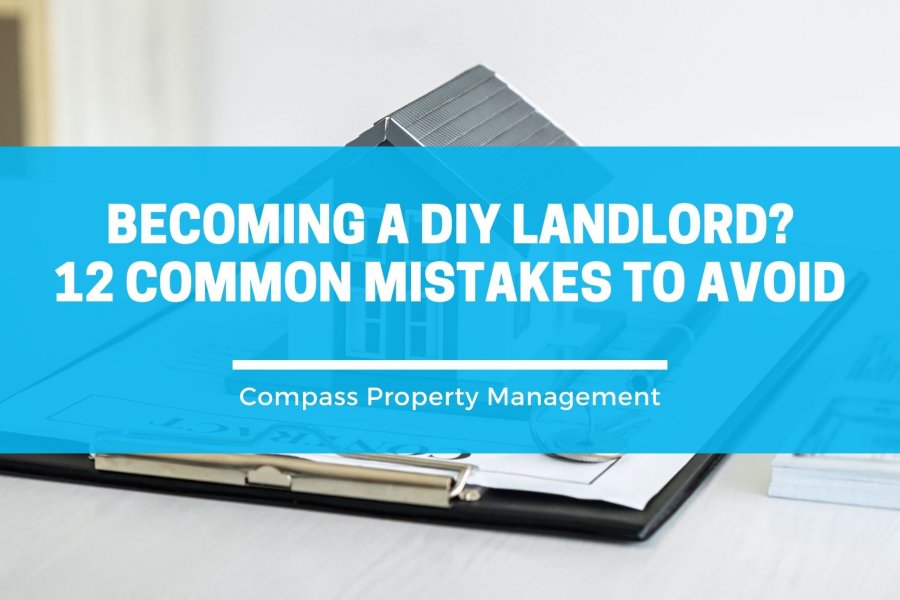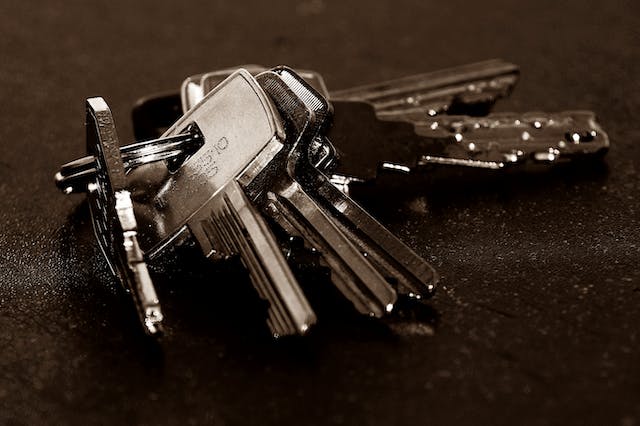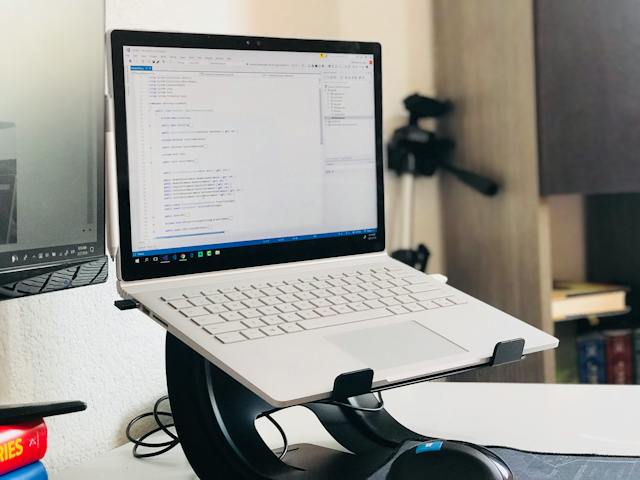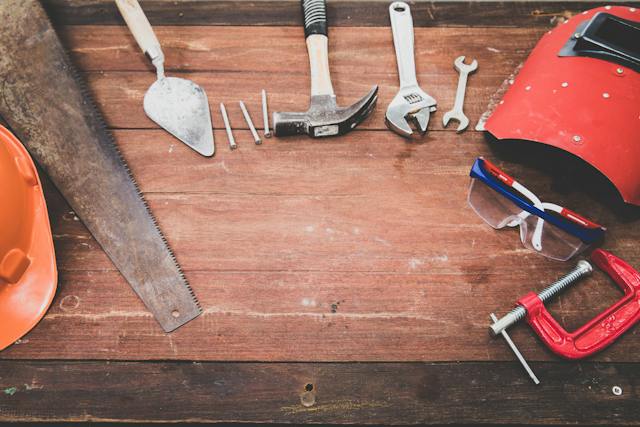
Renting out your home can be a simple way to gain financial freedom. Rental properties not only help you grow your long-term wealth but can also earn you a stable passive income. However, it’s important to note that managing a rental property is no walk in the park.
Landlords have a wide range of responsibilities from advertising their properties and screening residents to addressing repairs and residents' complaints promptly. In addition to these day-to-day responsibilities, landlords have to comply with numerous laws and regulations. With so much to do, it’s easy to make mistakes.
To ensure that your venture into the world of real estate is fruitful, the experts at Compass Property Management have written this guide. Keep reading to learn what it takes to become a successful DIY landlord, including the potential pitfalls you should avoid.
What Is a DIY Landlord?
There are many ways one can go about renting out a property. You’ve probably heard of full-time or out-of-state landlords. However, most investors prefer to become DIY or do-it-yourself landlords. This means that they chose to manage their rental property independently, without the assistance of a cleaning crew, lawyers, or property managers.
One of the main benefits of becoming a DIY landlord is upfront savings. By managing your property by yourself, you can avoid the fees associated with hiring a property management company or cleaning services.

Moreover, as a DIY landlord, you’ll have full control over every aspect of your rental investment, from resident selection to maintenance schedules. Also, you’ll gain a lot of hands-on experience, which can come in handy if you plan to expand your rental business in the future.
However, being a DIY landlord comes with a lot more work. As you’ll have no assistance, you’ll have to take on all the day-to-day and big-picture tasks for your rental property. This includes marketing your rental, screening prospective residents, collecting rent, handling maintenance and repairs, and dealing with any legal or financial matters that may arise.
If you’d like to have a more hands-on approach to your real estate investment, being a DIY landlord might be good for you. However, it’s important to note that this requires a willingness to learn, as well as a lot of time and dedication.
12 Mistakes to Avoid When Becoming a DIY Landlord
Becoming a DIY landlord comes with many benefits, including financial independence and a higher sense of control over your investment. However, navigating the intricacies of managing a rental property independently is no easy feat.
From choosing unsuitable residents to neglecting maintenance responsibilities, many things can go wrong when managing a rental property by yourself. Below are the most common mistakes DIY landlords make and how to avoid them!

1. Ignoring Market Trends When Pricing Your Rental
Many DIY landlords price their rentals too high or too low. This can drive residents away and leave you with a negative cash flow. That’s why you must stay informed about local rental market trends, including vacancy rates, rental prices, and demand for certain property types to ensure you set a competitive price for your property.
2. Skipping Proper Screening
Failing to thoroughly screen prospective residents can lead to issues such as late payments, property damage, or even eviction proceedings. That’s why you should always conduct background checks, verify income, and contact references before signing a lease.
3. Neglecting Legal Responsibilities
Landlords have to comply with many regulations, including local landlord-tenant laws, security deposit laws, and the Fair Housing Act. Failing to comply with these laws can land you in hot water. Making sure to take the time to familiarize yourself with local regulations regarding rental properties can go a long way in keeping your investment protected.
4. Underestimating Maintenance Costs
Many DIY landlords fail to budget for maintenance and repairs. This can create a huge dent in your pockets in the long term. That’s why you should include maintenance in your budget and set aside funds each month for unexpected maintenance expenses.

5. Poor Communication with Residents
Effective communication is key to maintaining positive relationships with your residents. Addressing their concerns and inquiries promptly can go a long way in retaining residents for the long term.
6. Neglecting Routine Inspections
Most landlords fail to conduct property inspections beyond move-in and move-out inspections. This is detrimental to maintaining the value of their property as regular inspections allow one to identify potential issues before they escalate. So, make sure to schedule periodic inspections of your rental throughout the year!
7. Overlooking Insurance Needs
Many investors overlook insurance coverage, but this is essential for protecting your assets. By shopping around, you can find a landlord’s insurance with the appropriate coverage for your properties, including liability insurance and landlord-specific policies, at a reasonable price.
8. Not Keeping Detailed Records
Sometimes landlords fail to keep records of their property upkeep, inspections, or even their financial documents. This is a huge mistake, as accurate record-keeping is essential for tracking income, expenses, and maintenance history. Luckily, you can invest in a reliable accounting system or property management software to streamline this process.
9. Being Overly Lenient with Rent Collection
Being understanding when residents are late with rent can help you foster a better relationship with them. However, being too lenient with rent collection can make late payments become a regular occurrence.

That’s why you should have an effective rent collection process in place and be ready to enforce late fees and penalties for missed payments whenever needed.
10. Relying Solely on Verbal Agreements
One of the biggest mistakes you can make when renting out a property is accepting a verbal rental agreement. Verbal agreements are difficult to enforce and can lead to many misunderstandings down the road. So, always make sure to put everything in writing, whether it’s the terms of the lease or an entry notice.
11. Ignoring Turnover Costs
Resident turnover can be costly in terms of lost rental income, advertising expenses, and maintenance costs. Failing to plan for these costs can negatively affect your bottom line.
That’s why you should set aside funds for these expenses and implement strategies to minimize turnover, such as offering lease renewals and maintaining positive relationships with residents.
12. Delaying Evictions and Legal Action
The eviction process and other legal disputes can be long and exhausting. That’s why many DIY landlords put off filing for an eviction or legal action against a resident. But, in doing so, they have to spend more time dealing with problematic renters.
If you ever find yourself with the need to evict a resident, it’s best to hire a property management company to help you solve the problem efficiently.
Bottom Line
Becoming a DIY landlord can be a fulfilling and financially rewarding venture, but it's not without its challenges.
With so many responsibilities on their plate, it’s easy for landlords to make mistakes such as neglecting resident screening, failing to comply with legal responsibilities, not keeping detailed financial records, and failing to save for essential maintenance expenses. By avoiding these common mistakes, you can ensure that your rental will be profitable.
Need more guidance on renting out a property? Contact Compass Property Management today! With years of experience in the Grand Rapids rental market, we can provide you with industry insights to make the most out of your investment.
